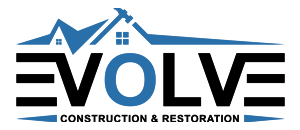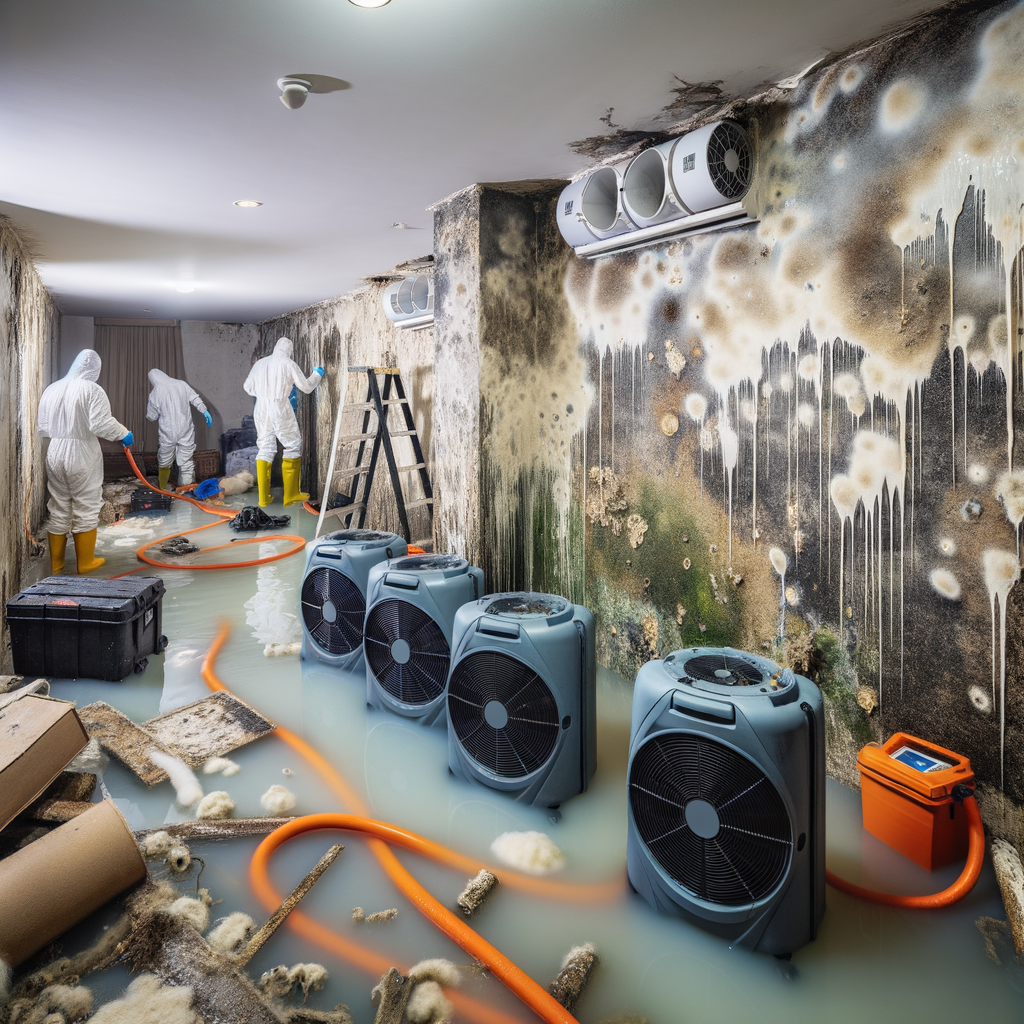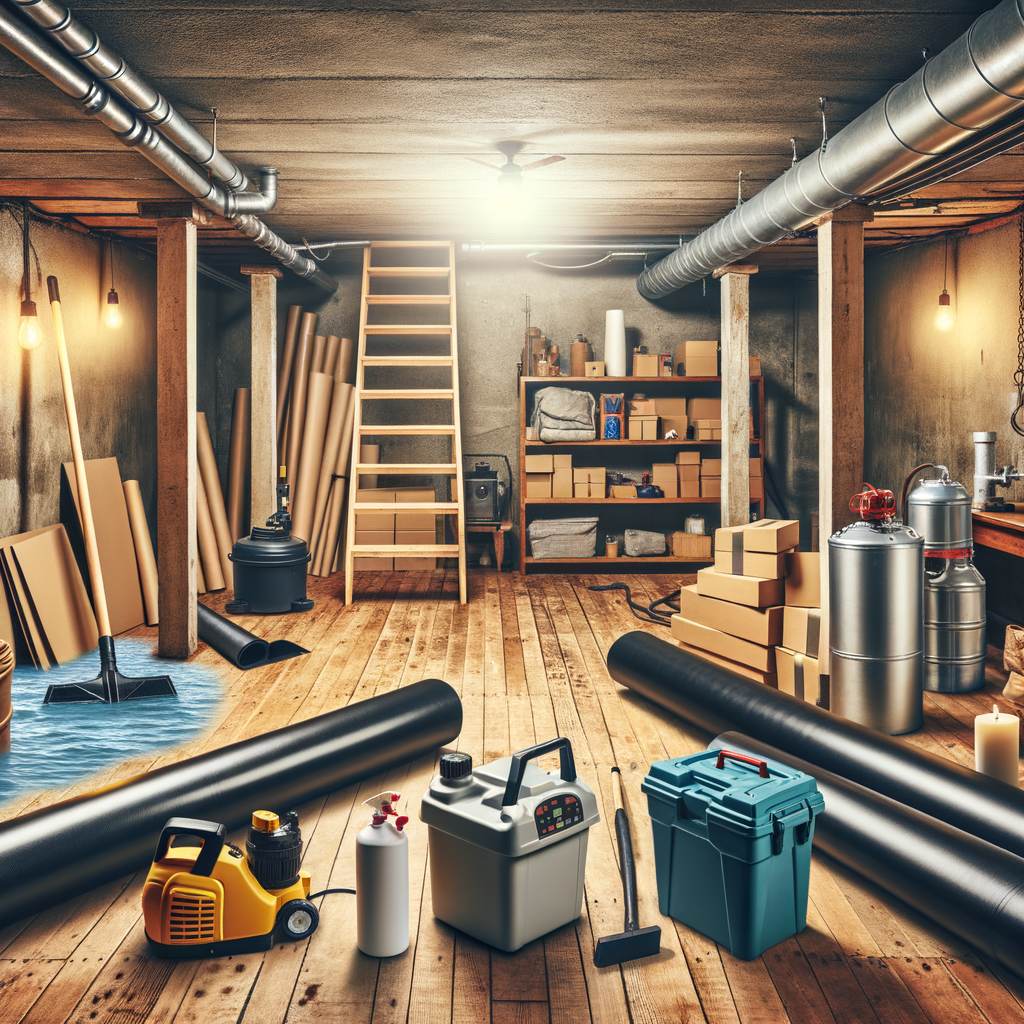The Immediate Threat of Mold After Floridian Floods
When floodwaters recede from your doorstep, the clock starts ticking. Mold, a silent intruder, can claim your Florida home as its breeding ground faster than you might anticipate. It thrives in damp environments, proliferating rapidly, and posing a serious threat to both your home’s integrity and your health. Understanding the risks and acting without delay is key to safeguarding your cherished spaces. It is imperative to grasp the urgency: every moment wasted can lead to an exponential increase in mold’s foothold.
Navigating the Aftermath of a Flood
In Florida’s warm climate, where even the slightest moisture can birth a mold infestation, post-flood scenarios demand immediate attention. Mold remediation is not just a buzzword; it’s a vital emergency service crafted to protect your home and health. Within its humid grasp, mold can swiftly transform from a minor nuisance to a major, costly endeavor. The process of tackling mold remediation after such natural disasters is a delicate balance of timeliness and thoroughness, and it begins with recognizing the escalating dangers lurking behind your walls. Florida homeowners must be informed and ready to act to mitigate the threat swiftly.
Understanding the Stakes
Tackling the aftermath of Florida’s floods isn’t simply about water removal—it’s about preventing the onset of an even more insidious problem. The primary concern here isn’t just structural; it’s also personal health. When left unchecked, mold can go beyond surface damage, releasing spores into the air that can trigger allergies, respiratory issues, or worse. The key is to transition from a reactive to a proactive stance swiftly. Taking the first step towards remediation can mean the difference between a quick recovery and a drawn-out battle against mold infestation.
The Intricacies of Mold Remediation
The process of remediation is methodical and precise, designed to ensure a mold-free environment well after the initial cleanup. Once professionals arrive, they assess the extent of the damage, strategize the most effective treatment plan, and quickly move to isolate the affected area. This containment is crucial — it prevents mold spores from dispersing further throughout your home. State-of-the-art equipment, such as HEPA air filters, works tirelessly to scrub the air clean of any particulates. Trust in Evolve Construction for a thorough and professional approach to restoring your space to its pre-flood condition.
Professional Expertise Is Key
Attempting to tackle mold remediation alone can be a daunting and risky endeavor. Mold is persistent and can hide in places that are not immediately visible to the untrained eye. A professional team not only has the experience to identify these hidden threats but also the proper tools to effectively remove mold-infested materials. Safeguarding your home requires meticulous removal of affected components — a task that professionals can handle with precision. By enlisting experts, you ensure the health of your home and family with effective and efficient remediation services.
Health Concerns Related to Mold Exposure
Mold’s impacts stretch beyond property damage; the health implications are a grave concern. For individuals with pre-existing respiratory issues or compromised immune systems, the presence of mold spores can exacerbate their condition. It’s not simply about aesthetics or property value; it’s about the wellness of the occupants. Recognizing signs of mold exposure early on is vital in preventing these health risks. Immediate professional assessment and remediation can be the barrier that stands between your family and the potential hazards of mold after a flooding event.
Replacing Porous Materials: A Crucial Step
In the wake of flooding, not all items can be restored, and understanding what can be saved is essential. Porous materials like drywall, insulation, and carpeting often require replacement to ensure a mold-free home. The porous nature of these materials makes them virtually impossible to clean thoroughly once they’ve been infiltrated by mold. This is not a sign of defeat but rather a strategic move for long-term health and safety. As part of a comprehensive remediation strategy, replacement of compromised materials should be executed without delay.
Ongoing Vigilance Post-Remediation
Victory over mold does not end with remediation; it’s just the beginning of a vigilant maintenance routine. Regular inspections of your home, particularly in areas previously affected, are paramount to prevent future infestations. Staying alert for tell-tale signs such as musty odors or discoloration on walls can catch mold before it becomes a major issue again. Proactive inspections coupled with swift action form a defensive line that ensures the longevity of your remediation efforts. Keep the air quality in your home safe by maintaining a consistent schedule of inspections and swiftly addressing any signs of mold you discover.
Your Path Forward with Evolve Construction
Understanding the gravity of mold growth after floods is crucial, and taking the right steps towards remediation is an investment in your property and well-being. Trust in the expertise of professionals who specialize in creating safe, mold-free environments for families throughout Florida is paramount. By engaging with specialists, such as those at Evolve Construction, you’re taking a definitive step to protect your home and health against the hidden dangers of mold. A fast response and strategic remediation plan, underscored by an ongoing commitment to maintenance, will return your abode to a place of safety and comfort. Learn more about mold prevention and remediation processes by visiting Evolve Construction‘s detailed resource guide.
Essential Remediation Insights From The Experts
Tip 1:
Act swiftly to address mold exposure by contacting remediation specialists immediately following flood to prevent mold spores from spreading. The faster you initiate the cleanup process, the less damage mold can inflict.
Tip 2:
Identify and repair the source of moisture that caused the mold, as remediation efforts will be futile if the moisture problem persists. This could be as simple as fixing a leak or as large-scale as overhauling a flood-damaged area.
Tip 3:
Protect your health by using Personal Protective Equipment (PPE) like masks, gloves, and goggles during cleanup, especially if you have respiratory issues or immune deficiencies; mold can have serious health repercussions.
Tip 4:
Consider replacing rather than cleaning porous materials such as drywall, insulation, or carpeting that have been in contact with floodwater, as they can harbor mold deep within that is difficult to eradicate.
Tip 5:
Regularly inspect your property after the remediation process to ensure that the issue has been resolved effectively, paying close attention to previously affected areas and any musty odors that may suggest mold regrowth.
Expert Answers to Your Mold Remediation Questions
How quickly should I address mold remediation after a flood occurs?
Taking immediate action within 24 to 48 hours after a flood is crucial to prevent mold growth. The longer water sits, the higher the chance for mold to establish and spread throughout your property.
What are the signs that indicate a mold problem post-flooding?
Signs of a potential mold issue include visible growth on surfaces, musty odors, and increased allergy symptoms among occupants after exposure to flood-affected areas.
Can I clean up mold myself, or should I hire professionals for remediation?
While small areas of mold can often be handled by homeowners, professional remediation is recommended for larger or more severe infestations to ensure complete removal and prevent health risks.
What are the potential health risks associated with mold exposure after a flood?
Mold exposure after a flood can cause respiratory issues, allergic reactions, and in severe cases, long-term health conditions, especially in those with existing health concerns.
What steps are involved in the mold remediation process in Florida homes?
The remediation process typically includes a thorough assessment, containment of the affected area, moisture removal, cleaning or removing contaminated materials, and restoration to prevent future growth.




